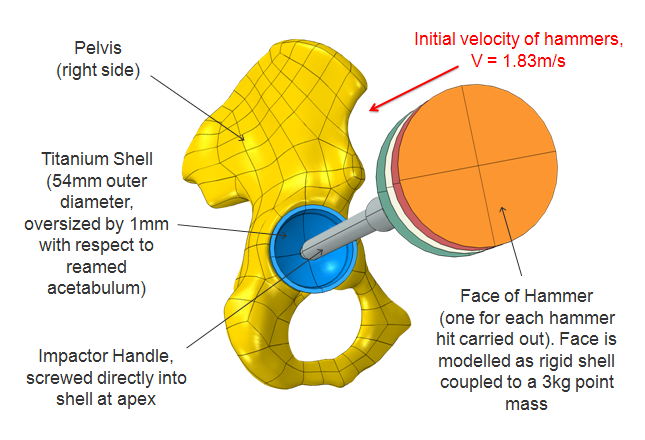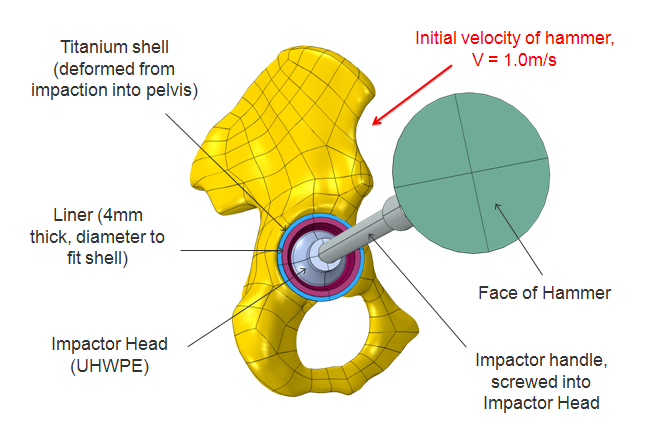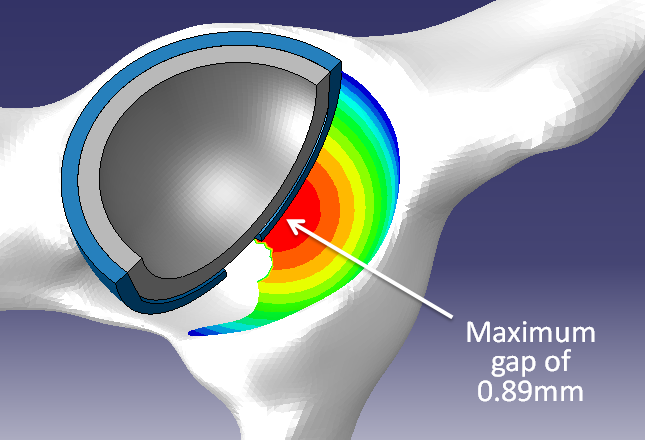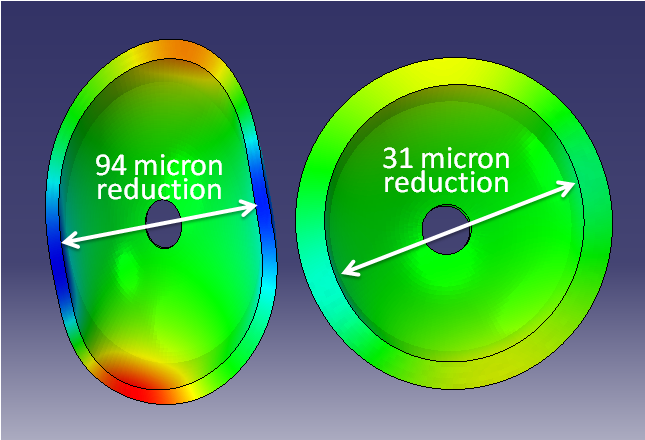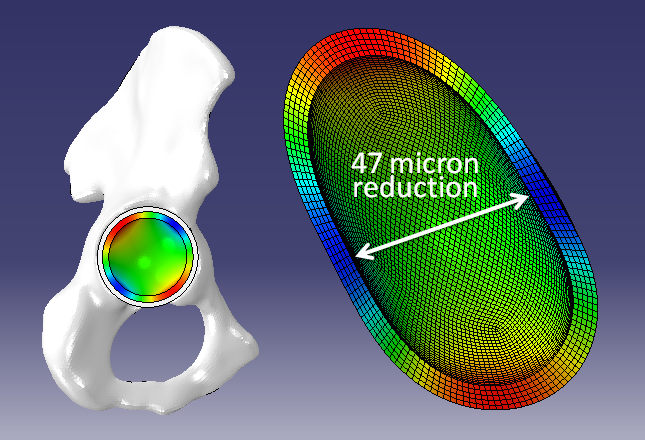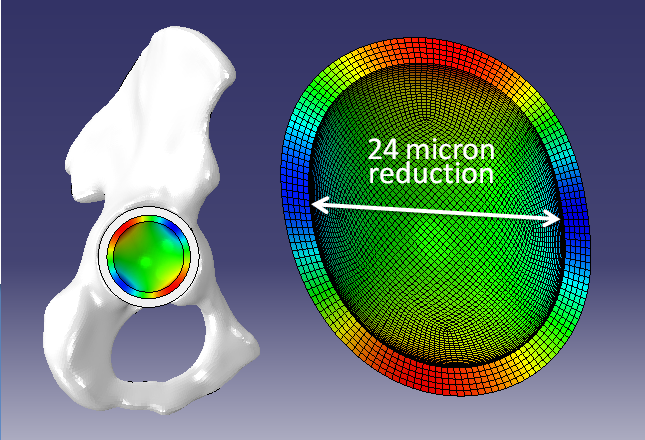
Projects
Various projects from the archive
Deformation of modular cup following impaction
into pelvis
Introduction: In cementless hip arthroplasty fixation of acetabular cups is often achieved using a press-fit between the cup and the bone, where the acetabulum is typically under-reamed by 1-4mm with respect to the size of the cup. Deformation of the cups during insertion remains a concern as it could lead to changes in the clearance and sphericity of the bearing, which can adversely affect fluid film lubrication that could lead to increased wear and, in extreme cases, equatorial contact.
Methods: A dynamic finite element model was used to simulate the impaction of a “typical” modular hip implant cup, consisting of both a Titanium Shell and Titanium Liner component, into a 1mm under-reamed acetabulum. The effect of varying the Shell wall thickness on final Shell and Liner deformation was investigated. The wall thicknesses of the Shell components analysed were 2mm, 3mm and 4mm. In all cases the thickness of the Liner was 4mm.
The impaction of the Shell into the acetabulum consisted of four consecutive 5.0J hammer blows. Following this, the impaction of the Liner into the Shell consisted of a single 1.5J hammer blow. Non-linear least squares spherical and circular fits were used to assess the change in nominal bearing clearance.
Results: The final decrease in spherical clearance of the Liner was 47 microns (across the diameter) for the 2mm Shell thickness case and 24 microns for the 4mm case. These results are significant compared to the value of 100 microns typically specified for the diametrical clearance to achieve fluid-film lubrication. Such a large deformation may disrupt fluid film lubrication.
